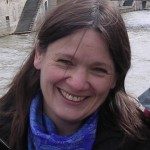Lien vers Pubmed [PMID] – 15131170
J. Clin. Microbiol. 2004 May;42(5):2054-64
A DNA macroarray containing 465 intragenic amplicons was designed to identify Staphylococcus aureus at the species level and to type S. aureus isolates. The genes selected included those encoding (i) S. aureus-specific proteins, (ii) staphylococcal and enterococcal proteins mediating antibiotic resistance and factors involved in their expression, (iii) putative virulence proteins and factors controlling their expression, and (iv) proteins produced by mobile elements. The macroarray was hybridized with the cellular DNAs of 80 S. aureus clinical isolates that were previously typed by analyses of their antibiograms and SmaI patterns. The set selected contained unrelated, endemic, and outbreak-related isolates belonging to 45 SmaI genotypes. In a gene content dendrogram, the 80 isolates were distributed into 52 clusters. The outbreak-related isolates were linked in the same or a closely related cluster(s). Clustering based on gene content provided a better discrimination than SmaI pattern analysis for the tested mecA(+) isolates that were endemic to Europe. All of the antibiotic resistance genes detected could be correlated with their corresponding phenotypes, except for one isolate which carried a mecA gene without being resistant. The 16 isolates responsible for bone infections were distinguishable from the 12 isolates from uninfected nasal carriers by a significantly higher prevalence of the sdrD gene coding for a putative SD (serine-aspartate) adhesin (in 15 and 7 isolates, respectively). In conclusion, the macroarray designed for this study offers an attractive and rapid typing method which has the advantage of providing additional information concerning the gene content of the isolate of interest.


